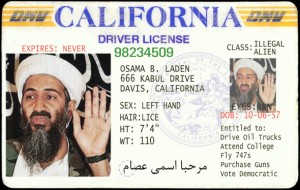New driver? Moving to a new state? Getting a driver’s license can be an exciting rite of passage or an aggravating moving task. Your state’s department of motor vehicles (DMV) administers drivers’ licenses in accord with established state laws and requirements.
New Driver’s License
Every state requires drivers to have a license and each administers its own driver’s license requirements. Technology has made it convenient for DMVs to make many resources available on the web where you can quickly look up new license requirements, download forms and drivers manuals, take sample drivers license tests, and more. To find your state’s DMV website simply enter the following into a search engine: your state dmv (for example: ny dmv).
If you’re a first time driver, here are the basic steps you’ll likely follow to get your drivers license:
- Take a driver’s education course in school or through a private commercial driving academy. Many high schools offer driver education classes as part of an elective curriculum.
- Apply for a driver’s permit, sometimes called a learner’s permit or temporary permit. Check with your state DMV for the eligible age of new drivers. If you are eligible for a permanent driver’s license at age 16, then it’s likely you will be able to get a learner’s permit sometime during your 15th year. Most teen driving permits come bundled with restrictions, such as curfews, limit on number of passengers, limit on number of miles away from home, etc.
- Log practice driving hours you spend with a parent or guardian. Your DMV will be able to tell you how many practice hours you could be required to have before you are eligible to apply for your real license. The car you’re driving must be registered and, in most states, properly insured.
- When you are ready and have all the required paperwork and training, take and pass your driving skills and knowledge tests.
- Qualify for a provisional driver’s license. Many states have graduate driver’s programs designed for young adults under age 25. Teens may have to drive with varying restrictions under the provisional license.
- Get your permanent license. Pay any license and/or administrative fees required by DMV.
Adults (18+), disabled drivers, and foreign (non-American) drivers may have specific instructions to follow and tests to take, so check with your local DMV office.
Out of State Drivers
As if moving from one state to another was not stressful enough, once there you’ll be legally required to get a drivers license issued by that state, usually within 30 days of residence.
Common documents you’ll need to present to qualify for a new resident driver’s license:
- Proof of residence: usually a utility bill satisfies the requirement.
- Proof of identification: birth certificate, Social Security Card, legal identification card
- Non-expired drivers license from another state
- Pay any license and/or administrative fees to the DMV.
Avoid needless waiting in long lines at the DMV by using the driver’s license resources available to you on your state’s DMV website.

REALLY? Don’t think that a photo of Bin Laden on a license is very appropriate!
I’m not quite certain as to why Osama Bin Laden is featured on a California driver’s license. Do you think that this is acceptable or funny?
Good info. But you may want to rethink the fake drivers license for Osama Bin Laden. Creepy and just not funny.
The sample CA DL is horrific, in extremely poor taste. Wow.
I’m having difficult time finding
The dmv handbook to study.